There was a time when colour clash was a very dirty word! Of course, I can only be talking about the ZX Spectrum in the mid-eighties, where that was the price you paid if you wanted to experience its glorious rainbow of magentas and cyans in a single game! It generally happened when a sprite of one colour moved over a background area of another, and one or the other would change to match, causing this colour bleed or attribute clash effect. It was all down to hardware limitations, which programmers would usually try and minimise, whether by keeping things monochrome, or drawing a black box around the sprite, or simply going with the flow and effectively making the sprite transparent to take in rather than clash with anything else going on. Renegade is a glorious example of what could be achieved, as is The Trap Door, which is nothing short of miraculous!

However, there was an alternative… Just let it happen! Despite the character sprites being totally black, Road Runner immediately springs to mind as a right mess, while Merlin isn’t only full colour but also features possibly the largest sprites ever on the Spectrum, just to maximise the effect! To an extent, colour clash happened pretty much everywhere on there though, but I can’t think of a more egregious example of just letting it do its worst than Everyone’s a Wally by Mikro-Gen in 1985… Now, I love this game, and at some point soon, future me is going to come back here and retrospectively add a link to a deep-dive on this absolute classic! It was the sequel to another classic, Pyjamarama, and was a proper pioneer too, offering multiple, very British, very working-class characters to switch between, which I reckon was a first for this kind of game – a puzzly, find and use items kind platform adventure! Each character, as well as those just wandering around, are a decent size and a different single colour, while the village they’re in is all the colours at once but on a black background, and while you’re between buildings, for example, that makes it all look marvellous, but move in front of anything and the huge box around the sprite suddenly emerges! And you’ll be moving in front of things most of the time, and although you’re character is nicely animated, this coloured box is jerking along behind and leaving its mark on everything in its wake!

The thing is, as much as no one wanted it at the time (unless you owned a Commodore 64, when it offered an opportunity for ridicule), I think over the years it’s become part of our home computing heritage, and as such, a lot of us now look at it with fondness and endearment, and symbolic of a better time. Which is a good place to jump to the original PlayStation because only very recently, I’ve started to feel the same way about that! It’s almost the opposite story though, where a decade or so later, what this thing was producing was previously unimaginable, as it effortlessly threw all that 3D stuff around in all the colours under the sun while CD-quality music played in the background! But then the PlayStation 2 came along, with stuff like SSX ready to instantly consign all that to history, and by the time the PlayStation 3 came along, we were all wondering how we’d ever even tolerated all those poorly defined polygons, and the screen tearing and jagged textures, let alone been blown away by them!

I can’t think of any generational leap in video games like the PS1 brought with it that’s also aged as badly as it has, even taking into account modern TVs not helping its cause, but I can pinpoint precisely when I realised that attitude had softened into something like the nostalgia I now have for the Spectrum’s colour clash! It was in the Autumn of 2023, when I was first flicking through the new From Ants to Zombies: Six Decades of Video Game Horror book from Bitmap Books, and I came to a game I’d never played before called Echo Night, and it was love at first sight! It’s a vaguely Lovecraftian supernatural mystery set on a Titanic-inspired opulent old cruise liner that’s played in the first-person but feels quite point-and-click adventure, and it couldn’t look more original PlayStation, and it couldn’t be more melancholic and atmospheric as a result! It was a literal eye-opener to me, and this born-again appreciation for the console’s signature aesthetics immediately led me to one place… Nightmare Creatures!

As someone who’d obviously long- since embraced the inner beauty of Spectrum colour clash, and still refuses to acknowledge the existence of framerates, in truth I’ve never really been that down on PS1 graphics. Okay, I’ve never denied that by their nature they have sometimes aged less gracefully than those on many other systems, but equally there’s a bunch of PS1 games I’ve never stopped playing to this day, and wishing they looked better has never really crossed my mind – Demolition Derby and its sequel, Resident Evil and its sequels, Doom, Wipeout 3, Ridge Racer Type 4… And as for Silent Hill, that simply couldn’t have existed anywhere else! But then there’s Nightmare Creatures, which I’ve tried to never stop playing several times over the years, but as much as I loved everything about it when it first launched here in January 1998, it’s all just been a step too far ever since…
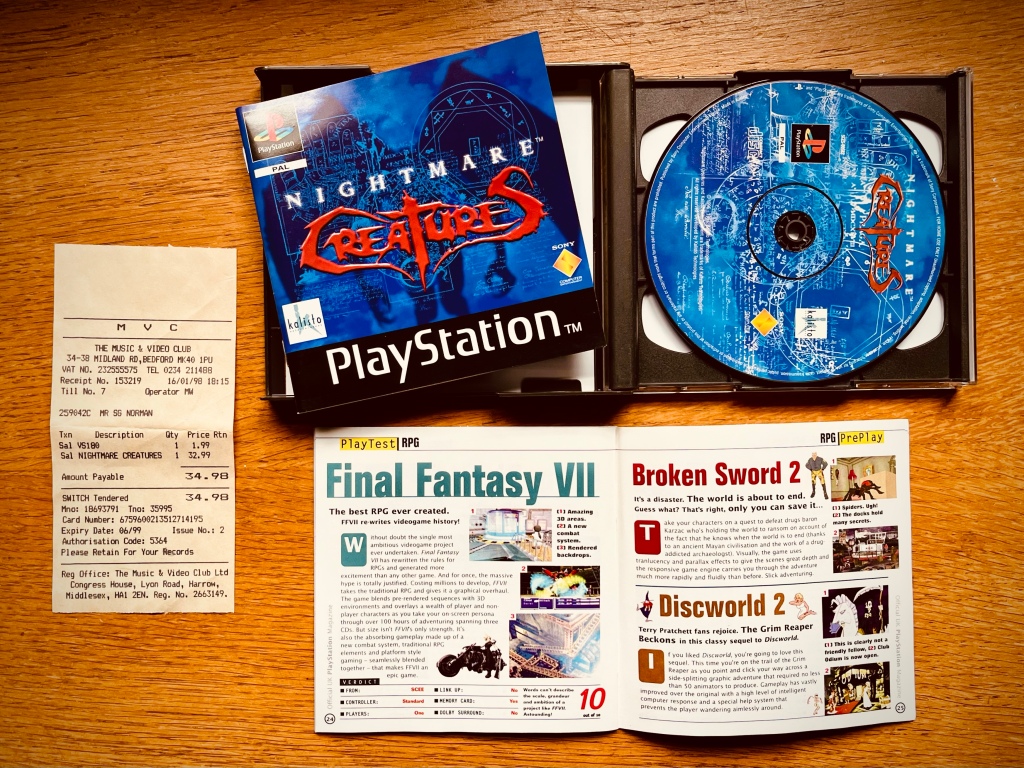
My receipt from MVC in Bedford that’s still in the box tells me I bought it on launch day or thereabouts for what I assume was their slightly reduced member’s price of £32.99. Says I bought something called “VS180” for £1.99 at the same time but no idea what that is – possibly blank video tapes but seems a bit cheap! Actually, while we’re talking in the box, this one also came with a 32-page Official UK PlayStation Magazine promotional booklet, with mini-reviews of stuff like Tekken 2, Final Fantasy VII and PaRappa the Rapper, and previews of G-Police, Crash Bandicoot 2 and this very game, where “the backstreets of 19th century London provide the gloomy backdrop for Sony’s chilling new adventure…” which it goes on to describe as being like a fusion of Resident Evil and Tomb Raider but now we’re getting ahead of ourselves so I should set the scene properly, and for that I’ll jump to the equally generous manual that’s also just about crammed in!
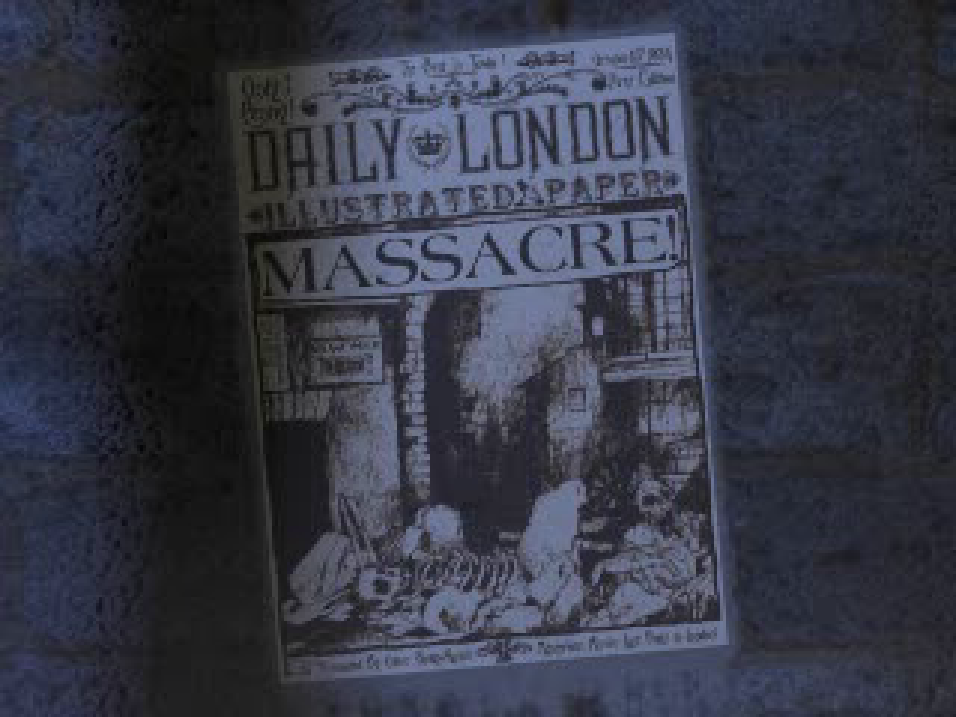
Actually, the instructions are a bit too generous for their own good, but if I’m jumping between vague introductions and prosaic character bios correctly, the game takes place in 1834 London but we actually need to go back to 1666 for the beginning of the tale, when a bunch of ne’er do-wells called the Brotherhood of Hecate decided to step up their devil worshipping game and came up with a plan to create an arcane elixir that would turn them into Supermen and allow them first to take over the city, and then to rule the world. Unfortunately, they ended up creating an army of monsters instead, but decided to go ahead with their plan all the same, until one of their members, Samuel Pepys, realised they’d gone too far and set fire to their headquarters, which in turn started the Great Fire of London!

Back in the nineteenth century, ever since the recent excavation of St Catherine Docks, which was a victim of said fire, people have been reporting seeing monsters, and there’s been whispers of folk mutating into grotesque things, and the dead rising from their graves… A world-renowned man of God and warrior against evil, Ignatius Blackwood, is summoned amidst the subsequent panic, and comes into possession of a mysterious manuscript, which turns out to be a diary, no less, written by Samuel Pepys, which not only records the exploits of the Brotherhood of Hecate but also spells out their alarming occult formulas. He shares his concerns about the diary’s existence with his expert friend Dr John F. who then gets killed while it’s being stolen from him, leaving a trail that eventually leads to Adam Crowley, a mad occultist who’s taken control of the Brotherhood so he can continue their original plan for world domination, and that’s where you come in, either playing as Ignatius or as Dr John’s veangeful daughter Nadia, attempting to stop Crowley before London becomes the feeding ground for his Nightmare Creatures!

The game arrived on PlayStation, as well as Windows PC, at the end of 1997 in North America, then a month later in Europe, with a Nintendo 64 version the following year. Did pretty well too, selling over 1.5 million units altogether. On PS1 it was published by Activision and Sony, and developed by Kalisto Entertainment, who’d done Pac-Man platformer Pac-in-Time and a bunch of other games I don’t really know since their original formation as Atreid Concept in 1990, and would go on to do The Fifth Element and 4 Wheel Thunder, among others, before going bankrupt in 2002, after what sounds like a pretty turbulent few years of name changes and buy-outs. They did a Nightmare Creatures II as well, which was published by Konami on the PlayStation and Dreamcast in 2000, and as I’ve never played it, I’ll quickly mention what I do know about it here, which is it plays similar (and we’ll get to that!) and continues the story but exactly a century later, in 1934. Not sure that did quite as well as a planned third game was cancelled, as was the movie adaptation! The original game did get a mobile version by Gameloft way back in 2003 though, and the mind boggles…
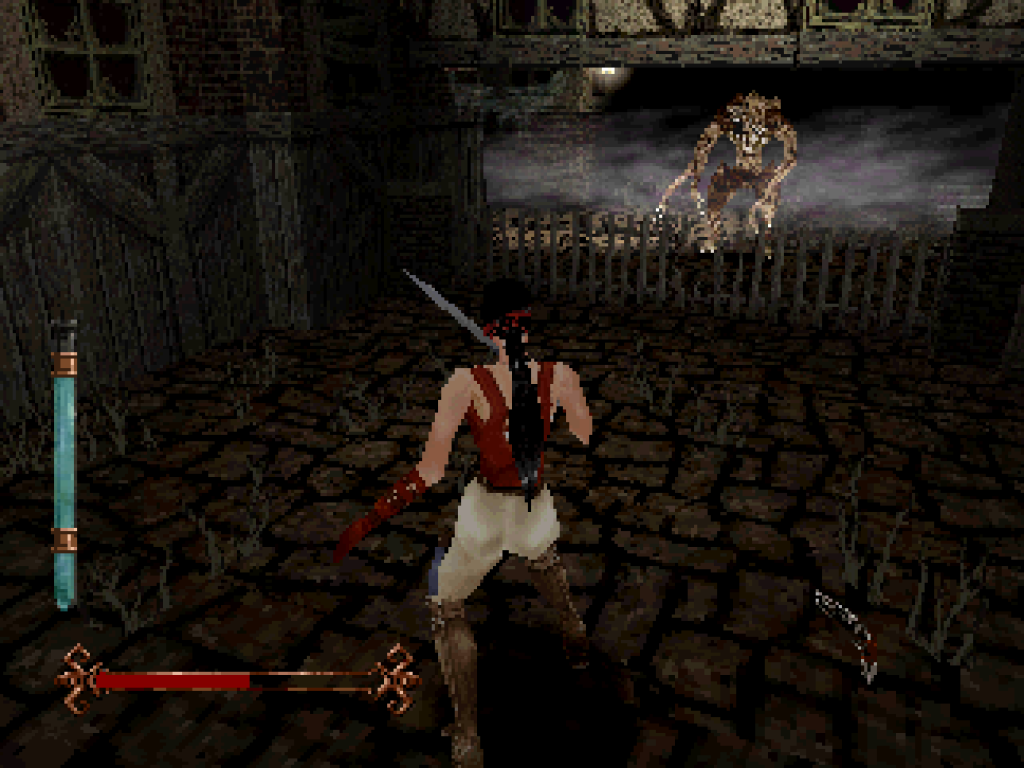
Remember everything I said about PS1 graphics earlier? Forget it! Your eyes will soon adjust to them anyway, and once you realise it’s tank controls all the way, they’ll be the least of your worries! Turn left, turn right and run forward isn’t the ideal setup for what in reality is more hack and slash than survival horror, in whatever year you’re reading this! And while you do get used to that too pretty quickly in general play, where it’s what the game was designed around so you’re never at a particular disadvantage as a result, just wait for the first boss battle! You’ve got sidestep left and right on the L1 and R1 shoulder buttons, pressing both will turn you right around, L2 lets you cycle through any special weapons you’ve found in occasional crates and R1 fires them. Then you’ve got strike or action, kick, jump and defend on the four buttons up front, while pressing up with any of them will make them a hard kick, long jump and so on. Both characters have their own repertoire of special moves too, and you can experiment with different button combinations to reveal these.

There’s a really top-notch narrated cutscene to enjoy before we get to try any of that stuff out though! Big scale CGI with loads of gothic polish and gory detail, and not a jagged edge in sight as it gives you a way quicker rundown of the story than I just did. Nice bit of church organ too! I should also touch on the two characters before we properly get started… I don’t think there’s a huge amount between them in terms of speed, health and so on, so which one you’ll go for will either be down to aesthetic choice, shall we say, or which set of moves and combos you prefer. I always play as the super-hot, ultra-violent female protagonist given the choice, but from what I can tell some of Ignatius’ aerial attacks might be a bit more devastating, and his combos seem a bit more straightforward in general too – X, Circle, X, Circle and so on. Nadia’s attacks feel more rhythmic and gymnastic but do involve more directional presses in the combo, so a bit more complex to remember. I really don’t think there’s much in it though, and both seem perfectly capable of dishing out a beating!
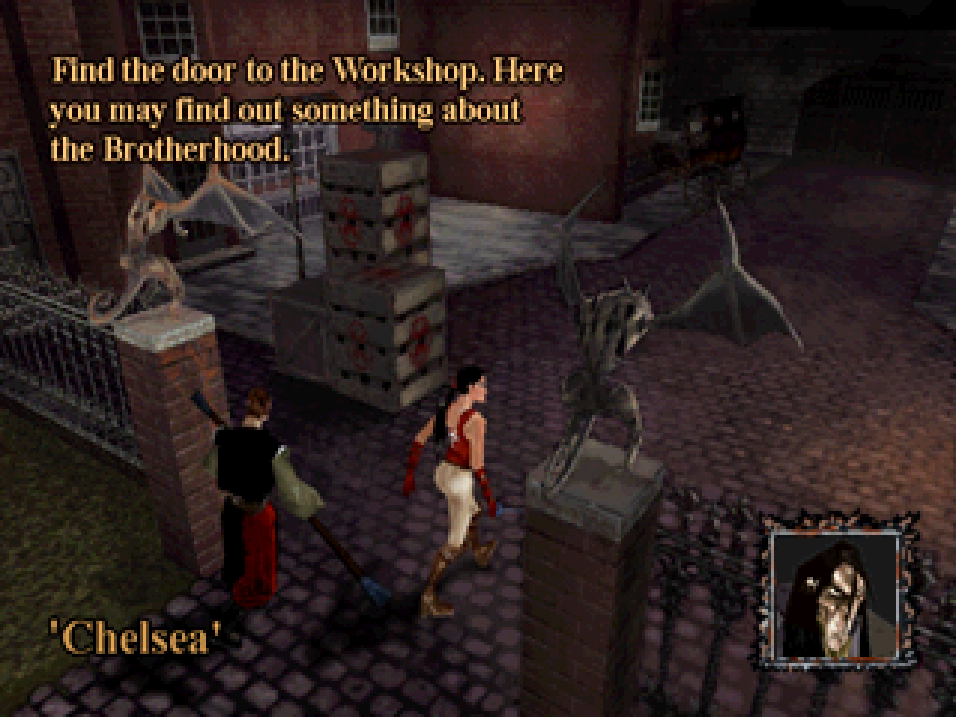
We begin the game in Chelsea, under instruction to find a door to a workshop where we might find out more about the Brotherhood. I’m not sure we’ll find out a great deal yet but we are introduced to a couple of key concepts before things get too relentless! Firstly, you need to explore because that’s how you’ll find crates to smash, and if you’re lucky that might mean extra health and extra lives, as well as various guns, bombs, flash grenades, smoke grenades and the like. There’s a less frequent Berserker power-up too that will let you dismember any creature with any weapon for thirty seconds and it’s great! But not as great as extra health or extra lives because you’re going to need as many of those as you can get your hands on! The often overwhelming difficulty isn’t helped by the fact it’s set as “hard” by default, and unless you going digging around in the options you’ll never know. Finding “easy” isn’t going to make a huge difference to your chances of survival though, so you really do need to check every nook and cranny and make use of everything! Finding the door to the workshop – or anywhere else throughout the game’s sixteen levels – doesn’t take quite so much digging around though, because another thing you’ll learn within seconds of walking up to each of Chelsea’s fashionable entranceways is that the one you want is going to burst open in front of you, meaning something nasty is also going to leap out from inside it!

In turn, this prevents your progress from being too gung-ho because if you get too close to the next door or gate or whatever, it’s going to trigger something whether you’ve already dealt with the werewolf, two zombies and a flying gargoyle you also just triggered into action in quick succession or not! There’s a decent variety of monsters on top of those, with harpies and giant spiders, praying mantis things and river creatures, plus a menagerie of very big Lovecraftian stuff that certainly isn’t what you want to see coming at you out of one of the game’s many dark alleyways, but however big and nasty-looking, all of them can be despatched in the same way, and without worrying too much about learning the fifteen or so combos for each character… Random selection of strike and kick, odd heavy strike and heavy kick, generally mash X and square! In fact, all you do need to worry about is landing the first hit because it you do, they’ll generally stagger back, hopefully into a corner or against a wall where they’re then pretty much helpless, even if it can still take forever to put them down. Let any of them get a shot in, though, and it’s easily game over. As well as your energy bar, you’ve also got to keep an eye on your adrenaline bar at the side of the screen, which will deplete every time you come across a monster, and if it runs out before you’ve killed it your heart is going to start pounding and decreasing your precious health instead. And once that’s gone, you lose one of your three initial lives.

Each level lasts about ten minutes on average, with some shorter and some longer, but always involving lots of monsters, lots of looking for everything and a few simple environmental puzzles, like find the switch to open the gate or push the cart with a conveniently burning barrel inside it into an obstacle to clear it. Every few levels you’ll come across a boss, which, as said before, can really give those tank controls an unwanted workout! The first one comes about four levels in, as you head through East London and towards the river, but what I really appreciated is how you know it’s coming well before you get there, with ominous rumbling every now and then, then as you get closer another rumble will cause the bridge you’re walking under to start to crumble on you. In principle I like the four headed, fire-breathing snake boss you then eventually come up against in this courtyard, where first you need to avoid its massive flames for long enough to get a hit in on one of the big pillars surrounding the pool it’s in, and once they’re all down you need to avoid its multi-mouthed bite (and several zombies), then get a few shots of your own in. However, turn left and right and move forward ain’t ideal for either dodging flames nor lining up a sword shot on a narrow bit of wood, and while the side-step on the shoulder buttons might seem like the obvious solution, that little leap will take you precisely the distance needed to land you right in front of the flame coming out of another mouth! Worst of all though, is when the camera starts rotating to follow the creature’s circular attack motions, which sounds helpful except you’re also changing direction with it, so unless you’re actively turning to counter the camera, you’ll quickly be swinging at fresh air! Nightmare indeed…

If combat of any kind feels clunky, then just wait for the platforming bits! Again, in principle, a chase through the backstreets of late-Georgian London, jumping over a series of exploding bridges sounds fantastic, but turn and move then turn and move isn’t exactly the ideal way to line up a leap over the watery abyss at full pelt! Same for the floating planks, giant swinging pendulums and deadly icicles later on, although these sections are few and far between, much like the bosses. They get a lot easier than the first one too – to the point of being a bit pointless in the main – with an abominable snowman, one of Crowley’s minions, Jose Manuel (or Manual, as the frequently error-prone in-game text states), and then a final showdown with Crowley himself. Kind of. In-between, you’ll be gadding about all over London – various docks, Hampstead Heath, Regents Canal and London Zoo, Pimlico, Westminster…

Being a horror nut, I think my favourite was the legendary Highgate (or “Highates”) Cemetery though. It’s way more linear than almost any of the others (which aren’t exactly open-world to begin with), with you funnelled down a corridor of decadent tombs, often hiding a werewolf waiting to jump out at you or a zombie strutting about behind a gate, but what a fantastic place to be, with snow falling and wisps of mist accenting its quiet darkness. Apart from the howls and the screams! While the rest of the graphics might be an acquired taste, the game really goes to town on environmental effects, with fantastic gaslight creating wonderful shadows on cobbles, and highly textured wood and brickwork setting the overall scene, while you’ll also come across falling leaves, water dripping from the tunnels under the river and some really torrential rain accompanied by another bit of very effective lighting when the lightning flashes!

That rain effect in particular is really heightened by some of the best rain sound I’ve ever heard in a game! You feel wet just listening to it, and when there’s thunder it’s equally as convincing. Otherwise, there’s a sampled footstep for every surface and all the monsters get their own guttural roar, and there’s usually something going on in the background, whether those distant rumbles from earlier, warning you of something even more ominous to come, or a disembodied groan, or simply a few rats squeaking about to add interest. Frédéric Motte’s soundtrack then ebbs and flows with the action on top of the horror soundboard, its quieter moments, like the slow and hauntingly minimal minor bass melodies or simple ambient textures, ramping up the tension way more than wondering what’s going to jump out at you from the next doorway after the fiftieth time! Then once it gets going, it’s the full Hammer Horror treatment, which works great even if I’ve never found it terribly memorable. Totally adds to the immersion, which reminds me, before I close on aesthetics, I want to quickly go back to how it looks or, more precisely, how it looked at the time, and to try and get a feel for that, I think we’ll have a look at the back of the box

There are six pictures on there, and it looks like they’re selected to get the game’s atmospheric horror across while also showing the scale of some of the monsters and its “next-gen” special effects. The relatively small size of the pictures here certainly has a smoothing effect, just like an old CRT TV would have, and I suppose this is the area its looks suffer the most today, particularly in the two characters at your disposal, which aren’t helped by you looking at their backs all the time… Unfortunately, their limited polygons severely limit the amount of detail in them, although they do their best and you could even say they go above and beyond, like with the individual ribbon ties on the back of Nadia’s top. There’s no escaping that this limits either one’s “character” though, to the point of ongoing distraction, which makes it hard to ever get that invested in either of them. Which I know is a weird thing to say – just have a look at Wally from earlier and he does alright, although admittedly he didn’t get killed as frequently! They move okay though, even if they’re not exactly giving Darkstalkers a run for its money, and several of the monsters actually come off a bit better, possibly with more limited animation but their comparative simplicity and mostly larger scale seems to have given them a bit more personality, with mutilated combinations of fleshy bits and skeletal bits… The harpies are properly creepy too, their grotesque nudity almost as disturbing as their horrendous screech!
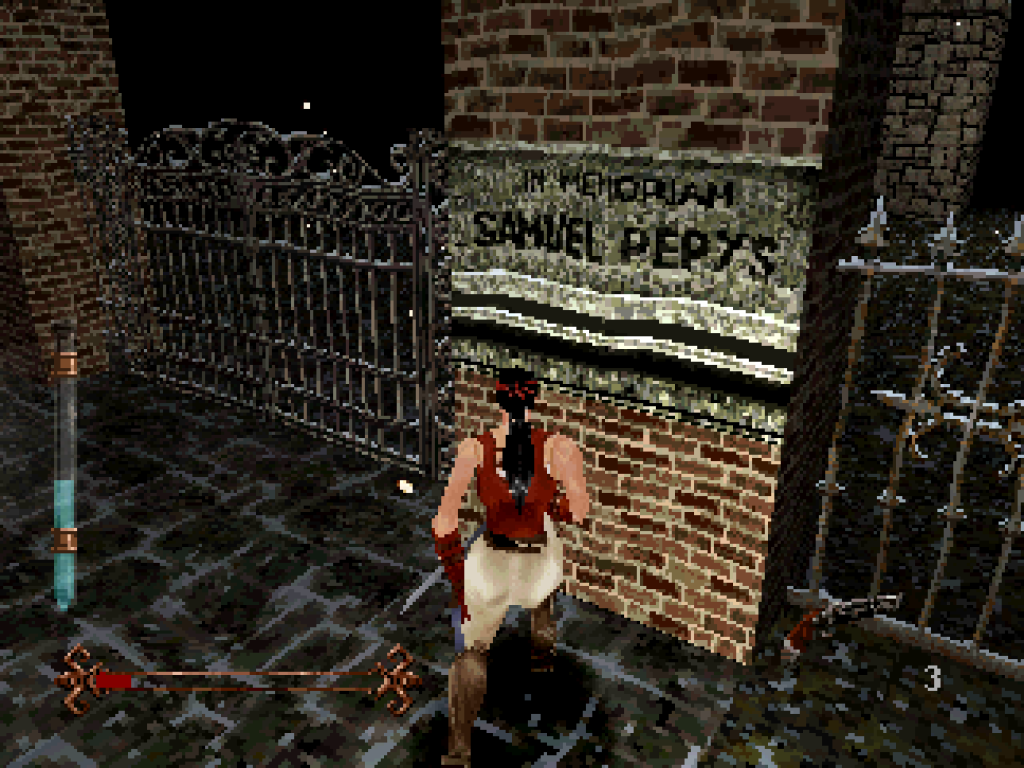
Tank controls and a few forgivable glitches aside, everything moves okay most of the time, although the camera does occasionally struggle to keep up if you happen to take a fight around a corner, for example. Which brings us back to the game’s difficulty because, while there’s no escaping there’s a lot of jaggedness to the graphics, that’s really the fundamental problem, where, taken standalone, you could probably say just get good, but throw in the imprecision and jankiness as well and it’s a tough ask. Okay, you can save your progress between levels, or choose to take a password instead, but coming into the game anywhere but the start is harsh. And even that’s harsh! And I reckon even if you did somehow keep going, you’d probably have had your fill long before you’d battled through sixteen levels. But you know what? I’m so glad I did finally go back because those first few levels are also a real treat! If the graphics and the controls are a perfect time capsule – for better or worse – for the original PlayStation, then so is the gameplay, but only for the better in this case! The feeling of being able to properly explore a “real-life” and “open-world” 3D gothic fantasy environment, with all sorts of moves up your sleeve for when all sorts of monsters are constantly jumping out of the scenery to get you is what the PS1 was all about, and without a hint of colour clash either!
As always, I’ll never expect anything for what I do here but if you’d like to buy me a Ko-fi and help towards increasingly expensive hosting and storage costs then it will always be really appreciated! And be sure to follow me on Instagram, X (formerly Twitter) or Threads for my latest retro-gaming nonsense!

